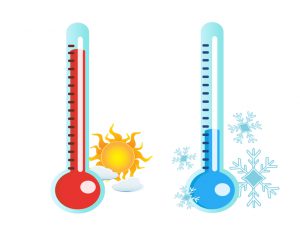Only a few things can affect the properties of a material as much as heat and you only need to think of how your own body always regulates its temperature to realize the statement is true. The same rule applies to industrial fasteners. The only thing that can be done to make sure they maintain their properties is to pay attention to possible effects resulting from temperature fluctuation during the design and construction phases.
Best materials for high heat environments
In general, it is advisable to avoid adding iron into the fasteners that are made for areas with high temperatures. Needless to mention, plastic materials are not suitable for high heat environments either. The ideal alloy or materials that you can use to build the fasteners usually depend on the temperatures occurring in specific applications:
- Low steel and medium carbon alloys are ideal for temperatures of up to 450° F
- Stainless steel is a great options for surroundings that see temperature fluctuations between 450° and 900° F
- Super strong alloys like the A-286 and Inco 718 are recommended for settings with temperatures between 900° and 1,200° F
- Nickel-cobalt alloys are your best bet in extremely hot environments where temperatures exceed 1,600° F
Best materials for extreme cold settings
Certain fasteners are especially designed to perform well when exposed to prolonged cold. However, without the right material, the fastener will not be able to do its job in temperatures below 30° and will most likely experience toughness and ductility issues. In addition, there is always a chance the metal itself can become brittle and break. To avoid issues associated with cold, manufacturers avoid using materials that are highly sensitive to low temperatures like low carbon steel, for instance. Similar to high heat environments, the ideal material will depend on the temperatures occurring in the extreme cold settings:
- Nickel-rich alloys work best in environments with -100° F
- Stainless steel performs well in settings with temperatures between -100° and -300° F
- Non-metallic materials are highly recommended for fasteners designed to perform in locations with under -300° F
The thermostat swings both ways

Fastener manufacturers are aware that not all screws and bolts are created equal and hence, what may work for a hex head screw will not necessarily work for hex bolts in general. In addition, there are situations when the fasteners are designed to function well in conditions of prolonged exposure to high temperatures, like in a vehicle’s engine for instance, and cases when the bolts need extra resilience and strength to perform their duty in low temperatures, such as in exterior applications for example.
Each circumstance comes with its own extreme temperature and a flaw in the design will inevitably cause the fastener to seize, weaken or affect the coating and plating of the surfaces they should hold together. To put it simply, errors during the design and construction phases could lead to more or less serious problems in the future due to corrosion or oxidation. All in all, a poor fastener design means it won’t be able to handle the temperature and it’s just a matter of time before they break down.
